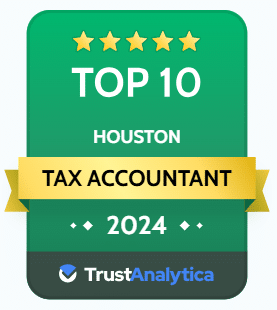Small businesses benefit from various tax credits that reduce the amount of tax they pay to the government. Here, we discuss tax credits, why they exist and provide a list of the top tax credits that small business owners should know.
Small Business Tax Credits
A small business tax credit is an amount of money subtracted from the taxes the business owes. Tax credits differ from tax deductions. For example, deductions cut a business’ total tax by a percentage of the deduction, depending on the tax bracket. Alternatively, tax credits reduce the tax due, not the amount of taxable income. In other words, a small business tax credit is a dollar for dollar deal – every dollar of credit cuts the business’ tax by a whole dollar. This credit is a significant benefit for small business owners because it helps recover some operating costs and retains the precious capital needed for growth.
As a practical example, if your business owes $20,000 in taxes, but you can claim a $5,000 tax credit, that amount is subtracted from your total tax bill making the new tax bill $15,000.
The Purpose of Small Business Tax Credits
The U.S. government grants tax credits to promote behaviors it finds favorable. For example, tax credits are offered to businesses as incentives for activities that benefit employees, promote specific industries, or aid or benefit society. One example is the government offering tax credits to businesses that purchase electric vehicles. The government encourages this to fight climate change and global warming. Because tax credits can have such a dramatic impact on a small business’s bottom line, it is crucial to stay apprised of tax credits for which your business is eligible.
7 Small Business Tax Credits for 2021
In the wake of the COVID-19 pandemic, related tax credits for small businesses top the list.
1. Employee Retention Credit
Under the American Rescue Plan, the Employee Retention Credit (ERC) is extended for small businesses through December 2021 and is available for all four quarters of the year. This tax credit allows small businesses to offset payroll tax liabilities by up to $7,000 per employee per quarter. That means a credit of up to $28,000 per employee is available for small businesses whose revenue declined due to the COVID-19 pandemic. A 20 percent decline in gross receipts during a single quarter makes a business eligible for this tax credit.
2. Paid Leave Credit
Another tax credit that falls under the American Rescue Plan is the Paid Leave Credit. This credit is extended through September 30, 2021, and offers credits for small and midsize businesses that offer paid leave to employees for COVID-related illness, quarantine, or family caregiving. The allowable credit is equal to wages up to $5,000 of paid leave for sick or quarantining employees.
Note: Small businesses are no longer required by law to offer paid leave related to COVID; however, if they do, the credit still applies.
Other tax credits of which small businesses should be aware are:
3. Health Care Tax Credit
With the Health Care Tax Credit, the smaller the business, the bigger the credit. The credit is highest for businesses with fewer than ten employees. Generally, the way to qualify for the credit is by enrolling in a Small Business Health Options Program (SHOP).
A business must meet the following requirements to qualify:
- (a) have fewer than 25 full-time employees,
- (b) have an average employee salary of approximately $50,000 per year or less,
- (c) pay at least 50 percent of full-time employees’ healthcare premiums, and
- (d) offer SHOP coverage to all full-time employees.
This credit can be claimed for two consecutive years, applicable from 2017 forward.
4. Work Opportunity Credit
This credit is available to employers who hire from specific groups that face barriers to employment. For example:
- Qualified IV-A Recipient – receiving TANF assistance
- Qualified Veteran – the IRS provides details of what “qualified” entails on their site under Tax Credits
- Ex-Felon
- Designated Community Resident (DCR) – between 18 and 40 years old and living in an empowerment zone, an enterprise community, or a renewal community
- Vocational Rehabilitation Referral – a person who has a physical or mental disability and has been referred to the employer while receiving or upon completion of rehabilitative services
- Summer Youth Employee
- Supplemental Nutrition Assistance Program (SNAP) Recipient
- Supplemental Security Income (SSI) Recipient
- Long-Term Family Assistance Recipient
- Qualified Long-Term Unemployment Recipient
Under the Consolidated Appropriation Act, 2021, this credit was extended until December 31, 2025.
5. Disabled Access Credit
Eligible small businesses that earn $1 million or less and have a maximum of 30 full-time employees in a year can claim this credit each year in which expenditures are incurred to make their business accessible to persons with disabilities under the Americans with Disabilities Act (ADA).
Expenditures include, but are not limited to, installing wheelchair ramps, upgrading restrooms, and providing Braille text materials.
6. Employer-Provided Childcare Facilities and Services
While few businesses these days seem to provide in-house child care for their employees’ children, a tax credit can make this an attractive option. This credit is a general business tax credit for 25 percent of qualified employer-provided child care expenditures plus 10 percent of qualified child care resources and referral expenditures. The credit is capped at $150,000 per tax year.
Qualifying expenditures:
- Include operating costs of a qualified child care facility
- Include costs for acquisition, construction, rehabilitation, or expansion of a property used as a care facility (but not land or any part of the principal residence of the taxpayer)
- May not exceed the fair market value of care provided
The employer-run facility must open enrollment to employees and must not discriminate in favor of highly compensated employees. At least 30 percent of the facility’s enrollment must consist of dependents of taxpayer employees.
7. Research and Development (R&D) Tax Credits
Several R&D tax credits exist for small businesses. These credits typically apply to science, medical and technology-based businesses; however, many businesses engage in qualified R&D activity.
The following activities qualify for an R&D tax credit:
- New prototype or model development
- Proprietary product on which you seek a patent
- Developing a new manufacturing process or business process
- Improving product efficiency or existing business processes
- Improving quality control processes
- Environmental or certification testing
Businesses that qualify for this credit can subtract up to 10 percent of R&D costs from their tax bill.
Ask your tax professional about small business tax credits that apply to your business. There are additional federal small-business tax credits from state and local governments. Tax credits often expire after a few years, so act quickly to take advantage of those that apply to you.
Accept our invitation for a free initial consultation and learn more about how we can help save you money on taxes. Call us at 713-396-3172 to set up an appointment.













